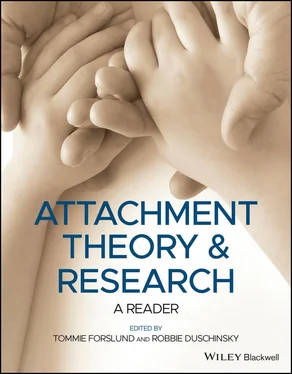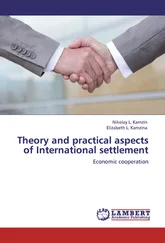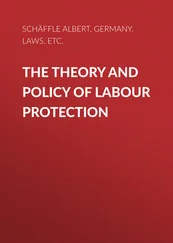2 Appraisal of such stimuli as warning signals or signals of threat;
3 Preparatory responses that have the effect of preparing an individual to take any of a great variety of actions, including those preventive or corrective of disturbance;
4 Avoiding actions that commonly have the effect of preventing actual disturbance, but that may fail;
5 Continuous monitoring both of threat and of any changes occurring in its degree of imminence, and also of the effects of preventive actions;
6 Continuous estimating of the degree of success in preventing disturbance likely to be achieved by preventive actions, or by plans for preventive action;
7 In the light of such estimates, the revision, if necessary repeated, of plans for preventive action.
1 Disturbance appraised as actual
1 Actual disturbance occurring in any of several categories of homeostasis, the disturbance in each case being caused by the action of a stressor and itself constituting a stress of some kind and degree;
2 Indicators of disturbance (stress), some of which act automatically in eliciting preparatory and/or corrective actions and some of which come into being as indicators only after ‘raw’ stimuli have been appraised as indicative of stress;
3 Preparatory responses that have the effect of preparing an individual to take any of great variety of actions, including corrective actions;
4 Corrective actions that usually have the effect of cancelling disturbance and restoring homeostasis, but that may fail;
5 Continuous monitoring both of disturbance and of any changes occurring in it and also of the effects of corrective actions;
6 Continuous estimating of the degree of success in restoring homeostasis likely to be achieved by corrective actions, or by plans for corrective actions;
7 In the light of such estimates, the revision, if necessary repeated, of plans for corrective actions.
It is probably wise to assume that any of the components in either sequence, when present, can either be conscious and felt or can remain unconscious and unfelt. What this statement implies is that every element in a sequence may be conscious and felt, or that no element in a sequence may be conscious and felt, or that any one or more elements may be conscious and felt and that others remain unconscious and unfelt.
To illustrate some of the clinical conditions that call for explanation it may be useful to give a few typical examples of people responding to disturbance, or threat of disturbance, without being fully aware of what is going on. A number of different patterns are well known to occur in patients before a holiday break. Patient A may be aware of anxiety but fail to relate it to the impending break and instead attribute it to something quite different. Patient B, by contrast, may show no overt anxiety, nor feel any, yet show by his actions that threat of disturbance has been appraised and appraised correctly: he may become remote, have little to say and may even miss the last session. Patient C may claim to be feeling no anxiety nor to have cause for any, yet be surprised to find himself tense and sweaty. Patient D may claim that he was never informed that a break was impending.
The assumption that any one or several elements in the sequences listed can be conscious and felt or unconscious and unfelt is in keeping with clinical experience. Taken in conjunction with knowledge that the appraisal processes involved vary from individual to individual, and also for any one individual on different occasions, and in addition may be of any degree of accuracy or inaccuracy, this assumption (and the schema of which it is based) might be expected to provide sufficient parameters to account for the great variety of psychological states, met with in and out of clinic, that are at present described in terms of anxiety, either conscious or unconscious, and of defences against anxiety. Whether or not that expectation is fulfilled requires extensive examination of the data.
1 1[Eds. Cannon, W. B. (1932). The wisdom of the body, NY: Norton.]
2 2[Eds. Some of the ideas presented here would later appear, in abreviated form, in the two‐page section ‘Maintaining a stable relationship with the familiar environment: a form of homeostasis' in Chapter 9 of Bowlby, J. (1973) Separation, London: Pimlico.]
3 3[Eds. The following text was located at the very end of Bowlby's manuscript notes, with the prefix “8A”. Since it fits with the theme discussed here, and the authors that are referenced, it may have been meant as an addition to, or as an alternative to, the current paragraph. Alternatively, at least one manuscript page is missing since the text would start mid‐sentence. “Menninger (1954, 1963). Other and quite different versions have been formulated by Engel (1963, 1962) and by Sandler and Joffe (Joffe & Sandler, 1968; Sandler & Joffe, 1969). In the Engel version, the parameter held constant is the ‘stability of the ego' or ‘intactness of the psychic self', the maintenance of which persisting interaction with (what is here termed) the personal environment is believed to be essential. In the Sandler–Joffe version the parameter held constant or above a minimum level is conceived as a ‘feeling of safety' or well‐being. Within the sequence advanced here Engel's ‘stability of the ego' is regarded as a product of the successful maintenance of personal environmental and representational homeostasis, whilst Sandler's ‘feeling of safety' is regarded as an indication of the extent to which all of the various categories of homeostasis under consideration are being successfully maintained. Formulations regarding quantities of psychical energy or levels or tension are not found useful.”]
4 4[Eds. Festinger, L. (1957). A theory of cognitive dissonance, Stanford: Stanford University Press.]
5 5[Eds. Kuhn, T. (1963) Structure of scientific revolutions, Chicago: University of Chicago Press.]
6 6[Eds. Jackson, D. D. (1957) The question of family homeostasis. Psychiatric Quarterly, 31 (1), 79–90.]
7 7[Eds. The reference is likely to Edwin Lawson, though exactly which text was meant by Bowlby is unclear. Lawson's only publication of 1963 was Lawson, E. D. (1963). Development of patriotism in children – a second look. The Journal of Psychology, 55 (2), 279–286.]
8 8[Eds. Wynne‐Edwards, V. C. (1962). Animal dispersion in relation to social behavior. Edinburgh: Oliver and Boyd.]
9 9[Eds. Waddington, C. H. (1957) The strategy of genes. London: Allen & Unwin.]
10 10In physics any condition causing a stress is commonly termed a ‘load', though ‘stressor' would be equally appropriate. A review of current usage in different fields of the term ‘stress' is given by Richter [Eds. Richter, D. (1960). Some current usages of the word “stress” in different fields. In Tanner, J. M. (Ed.), Stress and psychiatric disorder, Oxford: Blackwell, pp. 31–33].
11 11[Eds. Selye, H. (1950). Stress and The General Adaptation Syndrome. The British Medical Journal, 1383–1392.]
12 12The Oxford English Dictionary (1916) gives as the second meaning of ‘trauma' (derived from psychoanalysis): “a disturbing experience which affects the mind or nerves of a person so as to induce hysteria of ‘psychic conditions'; a mental shock”.
13 13In expressing that view, the existence of opposite tendencies follows.
14 14The concept of personal environmental homeostasis is distinct from and much broader than that of territoriality. Whilst very many species of bird and mammal show marked preference for a particular home range and particular companions (see Jurell & Loizos, 1966), far fewer maintain and defend an exclusive territory. [Eds. Jewell, P. A., & Loizos, C. (1966). Play, exploration and territoriality in mammals (p. 18). London: Symposia of the Zoological Society]
Читать дальше












